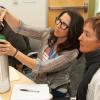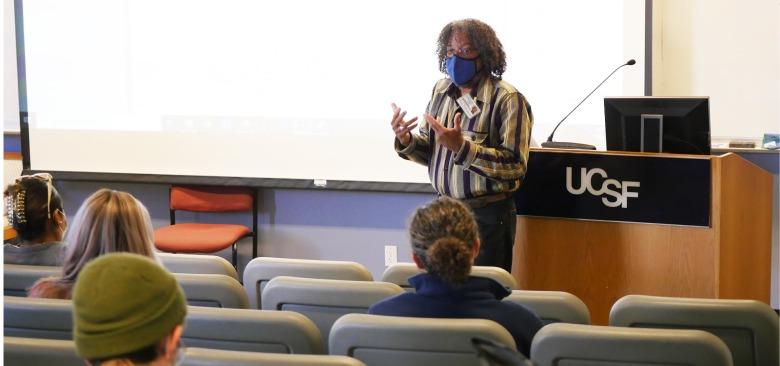
Professor Howard Pinderhughes, PhD, facilitates a discussion as part of the course “Race and Class Factors in Health Care Delivery."
Preparing Nurses to Lead Innovative Solutions for Health Disparities
Mags Hines, RN, was an educator and community organizer, and helped run the Berkeley Free Clinic before enrolling in the UCSF School of Nursing.
“I had an understanding of social determinants of health through my work, seeing first-hand the structural factors impacting access to care,” says Hines.
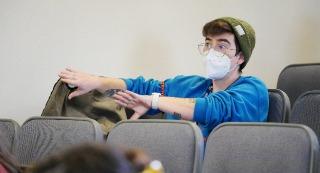 Mags Hines, RN But Hines credits “Race and Class Factors in Health Care Delivery,” a course offered in the school’s Master of Science program for giving them the framework to apply that knowledge in clinical and non-clinical settings.
Mags Hines, RN But Hines credits “Race and Class Factors in Health Care Delivery,” a course offered in the school’s Master of Science program for giving them the framework to apply that knowledge in clinical and non-clinical settings.
“As nurses, our daily reality of providing service – whether direct patient care, managerial or at a systems level – requires that we navigate the impacts of social determinants of health in a holistic and person-first way, and that approach is borne out in this class.”
How Race and Class Impact Health Care Delivery
“Race and Class Factors in Health Care Delivery” examines how social determinants of health drive inequity. It grapples with the question, As a health care professional, what can I do to impact health disparities and advance health equity?
 Mariana Trujillo, RN “Looking at the intersection of social determinants of health, toxic stress and violence, we explore how they contribute to the production of health inequality,” says professor Howard Pinderhughes, PhD, who teaches the course.
Mariana Trujillo, RN “Looking at the intersection of social determinants of health, toxic stress and violence, we explore how they contribute to the production of health inequality,” says professor Howard Pinderhughes, PhD, who teaches the course.
Master’s student Mariana Trujillo, RN, says the class broadened her understanding of the historical policies, often rooted in racism, that have contributed to social determinants of health. “The class made me take a step back and ask, ‘How can I make an impact on addressing health disparities and promoting racial justice?’”
By understanding factors that drive health inequity, says Pinderhughes, nurses are able to identify and formulate opportunities for intervention – both at the patient level and at systemic and policy levels.
But Pinderhughes warns that the work to address social determinants cannot be done in isolation. He encourages students to get to know their community and identify allies also working to address social determinants. This includes health care colleagues.
It’s a sentiment echoed by Hines. “There’s an evolving landscape within the health care ecosystem to engage in conversations about health inequity, health disparities. The next step becomes how do we take this collective understanding and transform that into action?”
Policy, Leadership and Nurse as Advocate
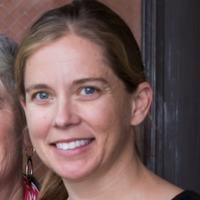 Linda Stephan, MS, PNP It’s a question that is also asked in “Policy and Leadership,” a course in the master’s program core curriculum. In this class, students explore how health care policy impacts practice, how social policies influence health determinants and how nurses can be advocates for change.
Linda Stephan, MS, PNP It’s a question that is also asked in “Policy and Leadership,” a course in the master’s program core curriculum. In this class, students explore how health care policy impacts practice, how social policies influence health determinants and how nurses can be advocates for change.
“The goal is to empower students early in their career to have confidence in trusting that they are experts in what they see,” says associate professor Linda Stephan, MS, PNP. “Students are witnessing first-hand how institutional, local, state and federal policies impact populations differently. Their perspective and voice matter, and this class empowers students with tools to foster change.”
Students work in collaborative writing groups to identify a policy issue and produce an op-ed. The course utilizes past graduates as guest speakers to share their experience leading institutional change or engaging in policy work as a nurse advocate.
“It’s really transformative for our students to see examples of graduates that have done this important work and to hear them speak to how they saw it as part of their role,” says Stephan.
Preparing DNP Students to Advance Health Equity
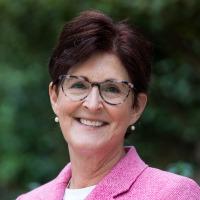 Lisa Lommel, PhD, NP The role of nurse as advocate is also an important aspect of the Doctor of Nursing Practice (DNP) program. DNP graduates lead complex health care institutions, advancing patient care and influencing policy. “They are uniquely positioned to improve health outcomes, particularly for vulnerable communities,” says professor Lisa Lommel, PhD, NP. “It is imperative that DNP students understand not just how social determinants foster health disparities, but their role in impacting social determinants.”
Lisa Lommel, PhD, NP The role of nurse as advocate is also an important aspect of the Doctor of Nursing Practice (DNP) program. DNP graduates lead complex health care institutions, advancing patient care and influencing policy. “They are uniquely positioned to improve health outcomes, particularly for vulnerable communities,” says professor Lisa Lommel, PhD, NP. “It is imperative that DNP students understand not just how social determinants foster health disparities, but their role in impacting social determinants.”
In the “Advanced Concepts in Clinical Prevention and Population Health” course, students review population health data, identify a disparity, explore the strengths and limitations of what has already been done to address that issue and design their own intervention.
Student Nancy Pope-Angulo, MHA, BSN, RN, studied unintentional firearm deaths among children and teens. “DNPs are in the unique position to educate members of at-risk communities about safe firearm storage and to partner with political, health care and community leaders to end the senseless deaths of our children,” says Pope-Angulo.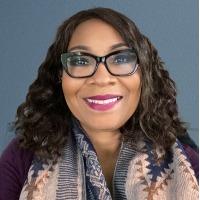 Nancy Pope-Angulo, MHA, BSN, RN
Nancy Pope-Angulo, MHA, BSN, RN
At the end of the course, students present a TED Talk-style presentation about why their intervention will improve the health disparity. “DNPs must become experts in translating evidence into practice,” says Lommel. “They need to communicate health information in a way that is useful to communities.”
Care of Rural Populations
The School of Nursing also prepares students to address unique health considerations for specific populations, including rural communities where hypertension, diabetes and heart disease — all leading causes of death in the United States — are seen at significantly higher rates.
Limited access to health care providers is a contributing factor, says assistant professor Elizabeth Castillo, MS, FNP. “It’s uniquely challenging to practice in a rural setting where it’s difficult to obtain licensed clinicians in not just primary care, but any specialty.
 Elizabeth Castillo, MS, FNP Castillo created the school’s rural health concentration to respond to this challenge. The only one of its kind in California, it prepares advanced practice nurses to meet the unique health needs of rural communities.
Elizabeth Castillo, MS, FNP Castillo created the school’s rural health concentration to respond to this challenge. The only one of its kind in California, it prepares advanced practice nurses to meet the unique health needs of rural communities.
“It’s an opportunity to delve deeply into social determinants of health impacting rural communities,” says Castillo. “It explores individual health needs, how the systems and circumstances in which individuals live impact their health, and what we can do to improve health outcomes.”
Of particular importance is the opportunity to complete an 80-hour clinical intensive in a rural setting. “The intensive provides opportunities for our students to understand first-hand what a clinician does in a rural clinic and the unique factors that impact their work,” says Castillo.
Many students who take the courses are from rural communities and plan to provide care there after they graduate. The intensives routinely lead to employment. “We’re providing career opportunities for students while simultaneously addressing the need for more phenomenal clinicians in rural settings,” Castillo says.


